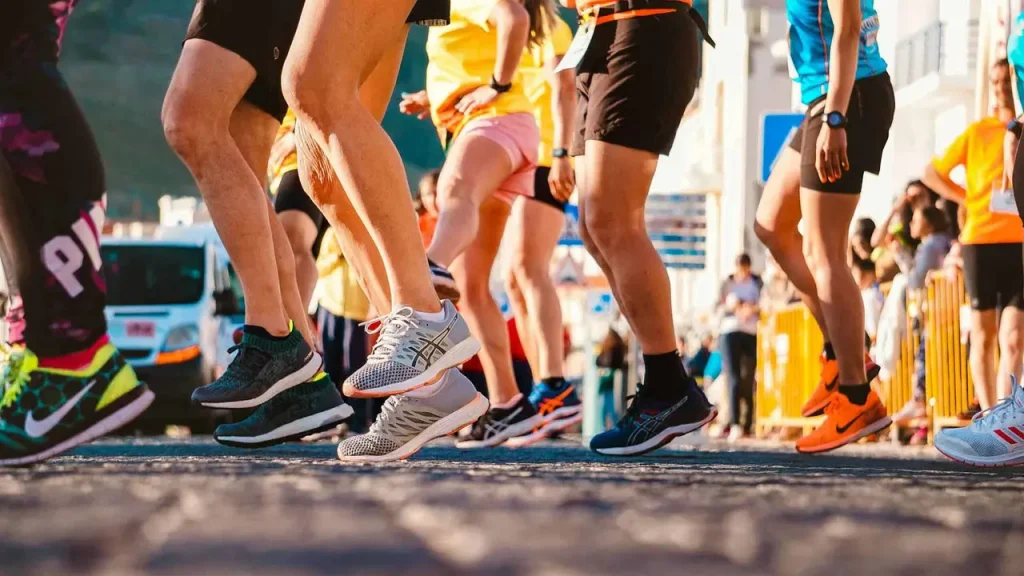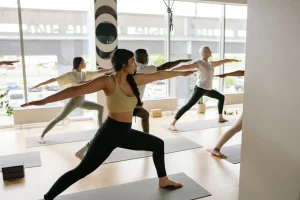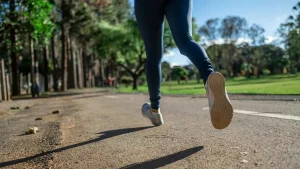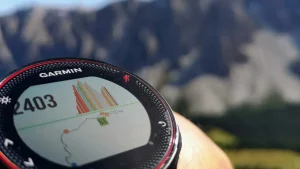
The Ultimate Guide to Choosing Running Shoes
I still remember the first pair of real running shoes I ever bought. I walked into a generic sports store, grabbed a pair that looked cool, and called it a day. The result? A two-week battle with blisters the size of small coins and a case of shin splints that made me question my life choices. It was a disaster. And it taught me a valuable lesson: picking running shoes isn’t about fashion; it’s about physics, biology, and a little bit of personal preference. It’s a science. But it doesn’t have to be rocket science.
The Ultimate Guide to Selecting Your Perfect Running Shoes
Let’s get one thing straight. The perfect running shoe for your friend, the one they rave about constantly, might be your worst enemy. Your feet are unique snowflakes of bone, muscle, and biomechanical quirks. This is more than just a buyer’s manual; this is a complete guide to choosing running shoes that will work with your body, not against it.
We’re going to dive deep into everything from the squishiness of the foam under your foot to the way your ankle rolls when you get tired. It might seem like a lot, but getting it right means miles of happy, pain-free running. Getting it wrong? Well, you already heard my blister story.
Why the Right Running Shoes Matter for Performance and Injury Prevention
You wouldn’t use a screwdriver to hammer a nail, would you? Using the wrong running shoes is essentially the same thing. It’s the wrong tool for the job, and the consequences range from annoying discomfort to sidelining injuries that can take months to heal. Seriously. The stakes are that high. Proper footwear is the single most important piece of gear in your running arsenal, acting as your first line of defense against the repetitive impact of pounding the pavement.
Impact on Biomechanics and Running Form
Every time your foot hits the ground, a shockwave travels up your leg. Good shoes dissipate that shock. The right shoe works with your natural stride, guiding your foot into a more efficient and stable motion. The wrong shoe can force your foot into an unnatural position, throwing your entire kinetic chain—ankles, knees, hips, and even your back—out of alignment. This can trash your running form, making you less efficient and slower. Over time, these small compensations your body makes can lead to big problems.
Avoiding Common Running Injuries
Runner’s knee. Plantar fasciitis. Achilles tendinitis. Shin splints. Stress fractures. These are the boogeymen of the running world, and ill-fitting or improper shoes are often the main culprits. A shoe that doesn’t offer the right kind of support for your foot type can cause excessive motion, straining muscles and tendons. A shoe with worn-out cushioning no longer protects your joints from impact. Think of it as an investment in your health. Spending a little extra time and money now is far cheaper than physical therapy bills later.
Understanding Your Feet: A Crucial First Step
Before you can even think about shoe models or brands, you need to become an expert on your own two feet. This is the foundation of everything. It’s the part most people skip, and it’s the part that matters most. So, let’s play detective.
Arch Type: Flat, Neutral, or High?
Your arch is your foot’s natural shock absorber. Its shape determines how your foot behaves when it bears weight. The easiest way to get a rough idea of your arch type is the “wet test.” Get your feet wet and stand on a piece of cardboard or a dry patch of concrete. Now, look at the imprint. A full, foot-shaped print suggests you have flat feet. If you see only your heel, the ball of your foot, and a thin line connecting them, you likely have high arches. Something in between? You’ve got a neutral arch. Each type has different needs for support.
Gait Analysis: Pronation Explained
Pronation is the natural inward roll of your foot as it transitions from heel to toe during your stride. It’s a good thing! It’s how your body absorbs shock. But some people’s feet roll too much (overpronation), while others don’t roll enough (supination or underpronation).
Overpronation is more common and is often associated with flat feet, potentially leading to instability. Supination, often seen in runners with high arches, means less shock absorption. You might hear all this and wonder, what type of running shoe do i need quiz? While online quizzes can be a starting point, the gold standard is a gait analysis at a specialty running store, where they watch you run on a treadmill to see what your feet actually do in motion.
Foot Shape and Size Considerations
Your running shoe size is probably not your dress shoe size. Your feet swell when you run, so you typically need to go up at least a half-size. You should have about a thumb’s width of space between your longest toe and the end of the shoe. Also, consider width. If a shoe feels tight on the sides, you may need a wider version. Don’t just suffer through it.
Key Features to Look for in Running Shoes
Once you understand your feet, you can start deciphering the jargon on the shoe box. A running shoe is a complex piece of engineering, and its features are what tailor it to different foot types and running styles. This part of the guide to choosing running shoes is all about matching the tech to your needs.
Cushioning: Finding Your Comfort Sweet Spot
Cushioning is the foam in the midsole that absorbs impact. It’s largely a matter of personal preference. Some runners love to feel like they’re running on clouds, while others prefer to feel the ground beneath their feet. There’s no right answer, only what feels good to you.
Maximum Cushioning vs. Responsive Feel
Maximum cushioning shoes are incredibly plush and are great for long distances or runners who want ultimate impact protection. Think soft, pillowy comfort. On the other end, responsive shoes have firmer cushioning that provides more “energy return.” They feel bouncier and faster, making them a popular choice for tempo runs and races. Many runners have a pair of each for different types of workouts.
Types of Cushioning Materials
The classic midsole foam is EVA (ethylene vinyl acetate), but brands are constantly innovating. You’ll see proprietary foams like Nike’s React, Adidas’s Boost, or New Balance’s Fresh Foam. They all offer different blends of softness, responsiveness, and durability. Don’t get too hung up on the marketing names; focus on how they feel on your feet.
Support and Stability: Addressing Overpronation
If your gait analysis showed that you overpronate, you’ll want to look at stability shoes. These shoes have features like a firmer “medial post” on the inside of the midsole to help gently correct the excessive inward roll of your foot. They aren’t “fixing” you; they’re just providing a bit of a guardrail to keep your stride in a more neutral alignment. Runners with neutral pronation or supination should stick to neutral shoes, as they don’t need the extra correction.
Heel-to-Toe Drop: What’s Your Preference?
Heel drop, or offset, is the height difference between the heel and the forefoot of the shoe. A traditional running shoe has a drop of about 10-12mm. A higher drop can favor heel strikers. In contrast, lower drop (0-6mm) shoes promote more of a midfoot or forefoot strike. Switching drop drastically can put new stress on your lower legs and Achilles, so if you want to experiment, make the transition slowly.
Outsole and Tread: Grip for Every Terrain
The outsole is the rubber on the bottom of the shoe that makes contact with the ground. Road running shoes have flatter, more durable rubber designed for pavement. Trail running shoes have deeper, more aggressive lugs for gripping dirt, mud, and rocks. Using a road shoe on a technical trail is a recipe for a slip-and-fall.
Upper Material and Breathability
The upper is the fabric part of the shoe that encases your foot. Most modern uppers are made from engineered mesh or knit materials that are designed to be lightweight, supportive, and, most importantly, breathable. A shoe that doesn’t breathe well will lead to hot, sweaty, and blister-prone feet. Not fun.
The Importance of a Proper Fit
I cannot overstate this. All the technology in the world means nothing if the shoe doesn’t fit correctly. This is the most critical element. I’ve seen people agonize over features but then buy a shoe that’s too small. The process of finding the right running shoe size involves more than just the number on the box; it’s about length, width, and volume. Always try shoes on at the end of the day when your feet are at their largest, and wear the same type of socks you run in.
Different Types of Running Shoes for Every Runner
The world of running footwear is vast. There are different tools for different jobs, and understanding the main categories can help you narrow down your search from hundreds of options to just a handful.
Road Running Shoes: Pavement Pounders
This is the biggest category. These shoes are designed for running on hard, even surfaces like asphalt and sidewalks. Their focus is on cushioning to absorb the impact of the pavement and flexibility to allow for a smooth ride. They are the versatile workhorses for most runners’ daily miles.
Trail Running Shoes: Tackling Off-Road Adventures
Built for the unpredictable nature of trails, these shoes are all about durability, grip, and protection. They feature rugged outsoles with deep lugs, reinforced uppers to resist tears from rocks and roots, and often include a “rock plate”—a hard piece of plastic embedded in the midsole to protect your feet from sharp objects. They are heavier and less flexible than road shoes for a reason.
Race Day Shoes and Lightweight Trainers
These are the sports cars of the running world. Designed for speed, they are stripped-down, lightweight, and often feature advanced technology like carbon-fiber plates for maximum energy return. They aren’t meant for daily use, as their focus on performance often comes at the expense of durability. Think of them as special occasion shoes.
Minimalist and Barefoot-Style Running Shoes
These shoes have very little cushioning and a zero-drop platform, aiming to mimic the feeling of running barefoot. The idea is to promote a more natural running form and strengthen your feet. However, they offer almost no protection and require a very slow, careful transition period to avoid injury.
When to Replace Your Running Shoes: Don’t Wait Too Long
Running shoes have a limited lifespan. Even if they still look okay on the outside, the midsole foam breaks down over time, losing its ability to absorb shock. Running in dead shoes is a major cause of injury. Most experts agree that a pair of running shoes should be replaced every 300-500 miles (or 500-800 kilometers). Keep track of your mileage. Other telltale signs include new aches and pains appearing after a run, uneven wear on the outsole, or if the midsole feels tough and unresponsive when you press on it.
Smart Shopping: Tips for Buying Your Next Pair
You’re armed with knowledge. Now it’s time to go shopping. This is your chance to put everything into practice and make a smart purchase. Don’t rush this process. This final step in your guide to choosing running shoes is where it all comes together.
Testing Shoes In-Store
Never buy a shoe without trying it on. And don’t just stand there. If the store has a treadmill, ask to run on it for a few minutes. At the very least, do a little jog around the store. This gives you a much better sense of how the shoe feels in motion. Pay attention to any rubbing, pinching, or uncomfortable pressure points.
Considering Your Running Goals and Distance
What are you training for? The ideal shoe for a casual 5K runner is different from the best shoe for someone training for a marathon. If you’re logging high mileage, durability and cushioning might be your top priorities. If you’re focused on speed, a lighter, more responsive shoe might be better. Be honest about your goals when talking to a sales associate.
The Role of a Specialty Running Store
While you might save a few bucks online, the value of a good specialty running store is immeasurable, especially for your first few pairs. The staff are typically experienced runners themselves. They can perform a gait analysis, measure your feet properly, and make expert recommendations based on the information you give them. Their expertise can save you a world of pain and frustration. It really is worth it.
Step Towards Your Best Run: Making an Informed Decision
You did it. You’ve navigated the complex, sometimes confusing, world of choosing running shoes. It’s not about finding the one “best” shoe on the market; it’s about finding the best shoe for you. By understanding your feet, knowing what features to look for, and testing them properly, you are setting yourself up for success. The right pair of shoes won’t make you magically faster overnight, but they will allow you to train consistently and comfortably, which is the real secret to becoming a better runner. Now go enjoy your run.







